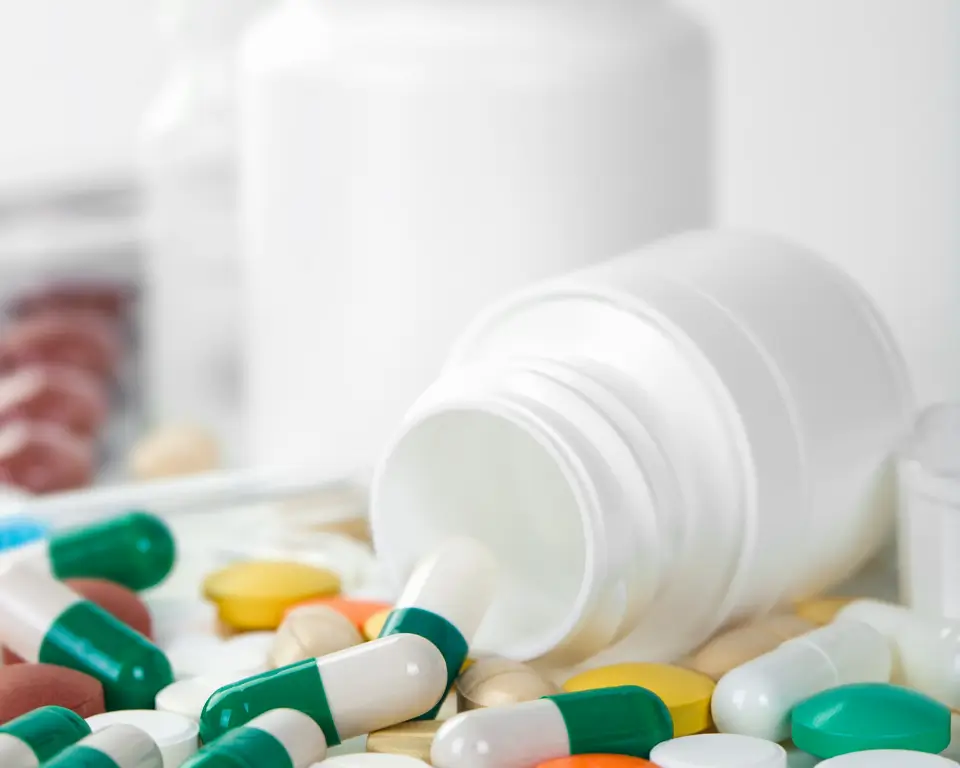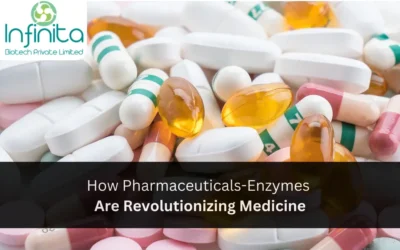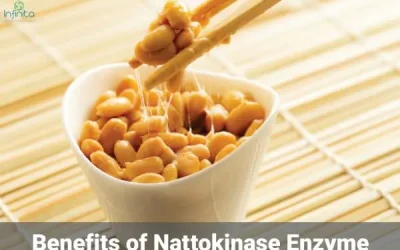Application Of Enzymes In Medicine
Enzymes are proteins that act as catalysts, which means they speed up chemical reactions. They are found everywhere — from the bottom of the ocean to your backyard, and even inside our own bodies.
Enzymes are extracted from living organisms like bacterium and moulds. They are biological catalysts capable of skyrocketing expeditiously the speed of a chemical change while not using excessive energy, and remain unchanged once the reaction is complete.
Where Are Enzymes Used Today?
For thousands of years, humans have used enzymes in brewing, baking and making cheese. While they are still employed for those purposes, the science of enzymes has evolved in leaps and bounds. This has created opportunities for new applications in many industries.
Enzymes are also routinely added to detergents to help remove stains from fabrics, caked on food from dirty dishes, and patient soils from surgical instruments, including endoscopes.
Importance Of Enzymes In Medical Device Cleaning
Enzymatic detergents designed specifically for cleaning reusable medical devices have been around for decades. In fact, studies have demonstrated their improved performance over non-enzymatic detergents in this application.
Enzymatic detergents are also referenced in multiple industry standards such as AAMI ST79 and the guidelines established by the FDA and the CDC. detergents
The two main enzymes used to clean medical devices today are protease and lipase.
Proteases are designed to break down protein-rich soils like blood, while lipases target fatty soils like adipose tissue. Other enzymes traditionally used in this application are amylases and cellulases, which break down starch and cellulosic polymers to facilitate their removal. These target soils may be found in human waste such as faeces.
Combining multiple enzymes with a properly formulated detergent can help break down a variety of human soils and waste.
How Enzymes Work In Medical Cleaning
Most genetic diseases are results of a selected accelerator deficiency. Similarly, bound bacterium are additional morbific thanks to associate degree accelerator activity they need.
Main application of enzymes in medicine:
- Analytical tests: Diabetics use strips of paper fertilised with aldohexose enzyme to observe their glucose.
- The presence of enzymes wherever they must not be gift may also facilitate to diagnose malady. For example, when the liver is diseased or damaged, enzymes leak into the bloodstream. Testing the blood for these enzymes will ensure liver injury.
- Therapeutic accelerators: Enzymes are typically used as medicines to interchange enzyme deficiencies in patients like is that the use of blood coagulation factors to treat bleeder’s disease, or the opposite where proteases are accustomed degrade fibrin; to forestall the formation of dangerous blood clots. Nuclease could be a potential medical care for monogenic disorder, but it is not clear how commercialised and therapeutically successful this has been.
- Proteases are accustomed to clean wounds and thus accelerate the healing method.
- Drug manufacture: The chemical synthesis of complicated medicine is usually troublesome, and corporations apply enzymes to perform chemical conversions
- In a semi-therapeutic way, enzymes are accustomed to aid digestion, to supplement the natural amylase, lipase and protease produced by the pancreas. People with lactose intolerance lose the enzyme lactase. Lactase supplements facilitate to avoid abdomen upsets for these folks.
As enzymes are specific biological catalysts, they must create the foremost fascinating therapeutic agents for the treatment of metabolic diseases.
Unfortunately, a variety of things severely reduces this potential utility:
They are large to be distributed merely among the body’s cells. This is the most important reason why enzymes despite booming, have not been applied to the big variety of human genetic diseases. A number of ways are being developed so as to beat this by targeting enzymes; as examples, enzymes with covalently connected external b-galactose residues are targeted at hepatocytes and enzymes covalently coupled to target-specific organism antibodies are getting used to avoid non-specific side-reactions. There are many uses of enzymes in medicine.
Being typically foreign proteins to the body, they’re substance and may elicit associate degree immune reaction which can cause severe and severe aversions, notably on continued use. It has tested attainable to bypass this downside, in some cases, by disguising the protein as associate degree apparently non-proteinaceous molecule by valency modification. Asparaginase, changed by valency attachment of synthetic resin glycol, has been shown to retain its anti-tumour result whereas possessing no immunogenicity. Clearly the presence of poisons, pyrogens and alternative harmful materials among a therapeutic protein preparation is completely out. Effectively, this encourages the utilization of animal enzymes, despite their high value, relative to those of microorganism origin.
Their effective time period among the circulation is also solely a matter of minutes. This has tested easier than the immunologic downside to combat, by disguise victimization valency modification. Other ways have conjointly been shown to achieve success, notably those involving demurrer of the protein among artificial liposomes, artificial microspheres and red somatic cell ghosts. However, although these methods are efficacious at extending the circulatory lifetime of the enzymes, they often cause increased immunological response and additionally may cause blood clots.
Enzymes Used To Treat Disorders:
These are used in three cases:
- To break the internal blood clots.
- To dissolve the hardening of walls of blood vessels.
- To dissolve the wound swelling to promote healing.
In some disorders like low blood pressure, or head or spinal injuries, there are chances of formation of blood clots. These clots lead to obstruction of blood flow to the target organ. This can be life-threatening if it is in the brain or heart which require a constant supply of oxygen and energy. The only way out then is to dissolve the clots.
These clots are usually removed by dissolution by enzymes that can break them.
Similarly, when there is atherosclerosis, hardening and thickening of blood vessel walls. This can lead to heart problems if untreated. The best way out at this junction is to decrease the fat intake and also dissolve the formed thickenings. Enzymes like serratiopeptidase and other work well.
For wound healing, the swelling formed might be painful and tend to form pus. Enzymes such as serratiopeptidase are used to dissolve the swelling.
Enzymes Used To Assist Metabolism
In previous or geriatric patients, the digestive capacity is low due to insufficient secretion of digestive enzymes. Hence their gastrointestinal system cannot digest food materials with efficiency. In such cases, they can experience malnutrition, constipation, bloating, etc. To aid digestion, enzymes like Papain are administered orally after food for easier digestion.
Enzymes Used To Assist Drug Delivery
Some medicines have to be compelled to penetrate deeper tissues for higher action. For this, some enzymes are used along with drugs in intra-muscular injection forms to help proper penetration of tissues. One of such enzymes is Hyaluronidase.
This is a natural human protein gift in human spermatozoan to assist spermatozoan penetrate female internal reproductive organ tissue and fertilize with ova. Here the same enzyme is manufactured by rDNA technology and administered along with drugs to enable efficient drug delivery to the target site.
Enzymes To Diagnose Disorders
Enzymes of the liver, kidney, skeletal muscle, heart, etc. leak into blood during related disorders. Measuring the amount of the corresponding protein for his or her presence in high or low levels in blood indicates the particular disorder. This is why it is important to have enzymes in medicine.
Ex: Creatine kinase for muscle weakness and injury.
Similarly, by use of polymerase chain reaction (PCR), they help to diagnose genetic diseases in the prenatal stage for disorders like sickle cell anaemia, Huntington’s disease, beta-thalassemia, etc.
Enzymes Used In The Manufacture Of Medicines
Immobilised enzymes are used in the manufacture of many drugs and antibiotics. This is attainable as enzymes convert the pro-drug molecules to medication or beginning material to medication. Also, steroidal drugs are manufactured by enzyme action on plant steroids.
Enzymes Used In Toothpaste
Enzymes of papaya and pineapple are used in the dentifrice. They are found to remove the stain on teeth to give white and sparkling teeth.







